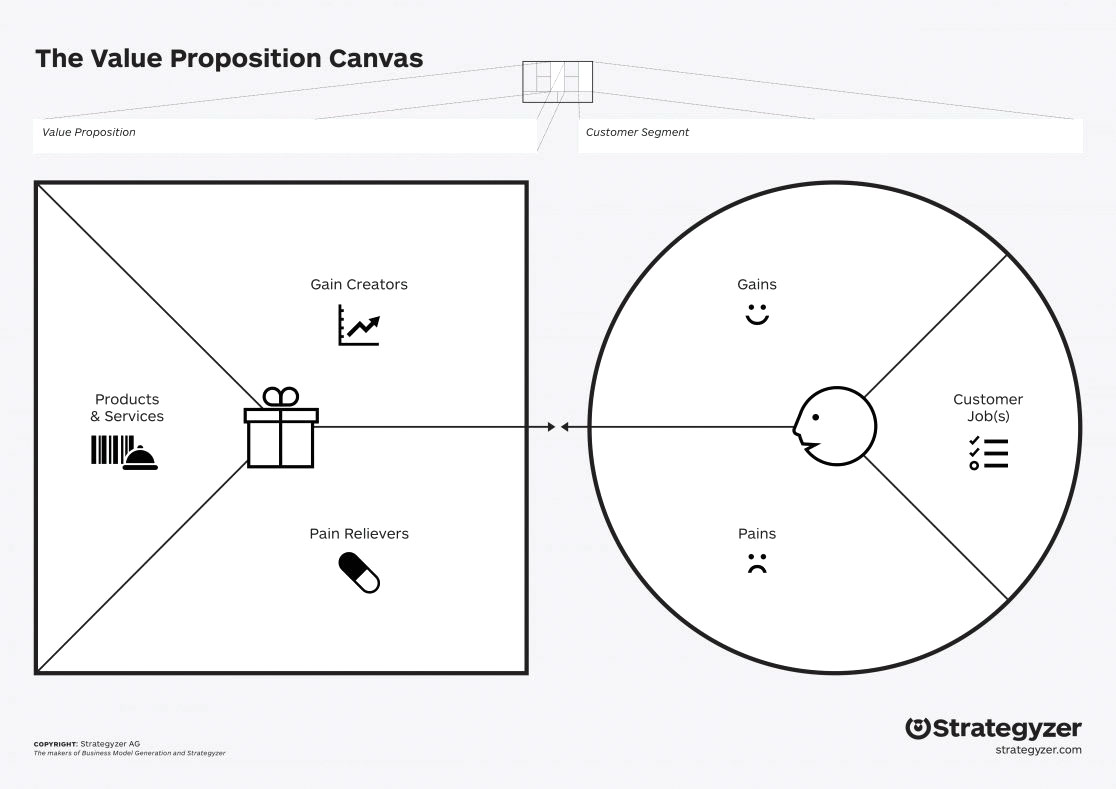Evelyn Lee is a Startup Advisor in the Tech Space, Angel Investor, Founder of Practice of Architecture, and Host of the podcast Practice Disrupted. She is a prominent speaker on architectural practice evolution, technology integration, and diversity in AI, dedicated to guiding the profession into new horizons.
Crafting a well-defined business strategy is crucial for the success of any business, architecture firms included, but according to the most recent AIA Business Survey Report in 2022, only 26% of small firms, 40% of medium-sized firms, and 71% of large firms have one written down.
So, where do you start? There are endless books and online resources on various approaches to strategic planning. However, architects are a picky bunch that inherently believe that who we are and what we do is difficult to capture. That’s where I think utilizing visual frameworks is a great way to clarify the process of aligning vision, goals, operations and more.

Chengdu Co-Innovation and Cooperation Center by LAGUARDA.LOW ARCHITECTS, Chengdu, China | Photo by Arch-Exist photography
This article is part of a series about Designing a Better Business for Architects. I have been taking baby steps towards a piece on writing a business plan as I am working towards my business plan for the Practice of Architecture. Other articles in this series include:
- “Architects Are Bad at Business:” Here’s Why and What We Can Do About It
- Why Architecture Firms Need Better Mission, Vision and Values Statements
- How Architects Can Get Into the Right Mindset for Designing a Better Business
- Why a Growth Mindset is Necessary for Building Better Architecture Businesses
So, back to visual business models.
Visual business models can be a powerful tool for creative professionals, like architects, who often prefer to communicate through drawings and diagrams. It lets you map out vital elements like your value proposition, customer segments, revenue streams, and more on a single canvas. This big-picture perspective helps identify strengths, deficiencies and opportunities early on.
Here are some visual business models that help you better define your business and, ultimately, your business model.
The Business Model Canvas
Developed by Alexander Osterwalder, the Business Model Canvas provides a simple, structured way to conceptualize and communicate your business model through nine essential building blocks. By mapping out your value propositions, customer segments, channels, revenue streams, costs, and more, you gain a holistic overview to analyze how the different pieces of your business concept fit together.
For architects and designers, the Business Model Canvas is an effective tool for prototyping and testing different business model options before making significant investments. It forces you to clarify your unique selling proposition and determine whether your planned activities, partnerships, and resources align to deliver that value to the customers you want to attract.
The Value Proposition Canvas

The Value Proposition Canvas created by Alexander Osterwalder and his company, Strategyzer via Flickr
While the Business Model Canvas provides a high-level view of all components of your business, the Value Proposition Canvas allows you to dive deeper into two key areas: your service (or a product if you are branching out) value proposition and the different type of customers you want to pursue. For client-focused firms like architecture and design studios, this canvas helps ensure a great value fit between what you offer and your target customers genuinely want.
Using the Value Prop Canvas, you map out your service features, the benefits you provide, and the pain points you resolve for specific customer profiles. This exercise forces you to validate your assumptions about your customer needs and how well your proposed value proposition satisfies them. Iterations of this canvas can optimize your strategic offering before you decide to execute.
Balanced Scorecard
The Balanced Scorecard, developed by Drs. Robert Kaplan and David Norton, offer architecture and design firms a strategic framework to translate their vision into actionable strategies. It encompasses four perspectives tailored to the unique needs of creative practices: financial, customer, internal processes, and learning and growth. In the financial dimension, firms track metrics such as revenue growth and project profitability to ensure that their strategic decisions contribute to long-term financial sustainability.
Meanwhile, the customer perspective focuses on understanding client needs and satisfaction, measuring factors like client feedback and project success rates to foster strong client relationships and repeat business. Internally, firms optimize key processes, like project management and design workflows, to enhance efficiency and quality, ensuring that projects are delivered on time and within budget.
Additionally, the learning and growth perspective encourages firms to invest in employee development and innovation, empowering teams to adapt to industry changes and drive creative excellence. Through this holistic approach, the Balanced Scorecard enables architecture and design firms to monitor progress across various dimensions and effectively execute their strategic objectives, ultimately leading to sustainable growth and success.
Strategy Mapping
In addition to business model canvases, architects and designers can employ visual mapping approaches to coherently lay out their overall strategic game plan across four essential perspectives: financial, customer, process, and learning/growth.
Starting with your overarching vision and financial goals, you map out the specific customer value propositions needed to achieve that vision. From there, you define the operational processes and workforce capabilities required to deliver that customer value reliably. The strategic storyline and links between each perspective become clear when visualized this way.
Like most architecture and design studios, the process and learning/growth perspectives are critical for service-based firms, and this mapping approach underscores their importance.
Porter’s Five Forces

Porter’s Five Forces analysis template designed by Greg Emmerich via Flickr
When developing a strategy, it’s critical to deeply understand the forces shaping competition and profitability within your market sector or niche. Potter’s Five Forces model helps architects, designers and other professional service providers systematically analyze the vital competitive factors.
The five forces examined are rivalry among existing competitors, suppliers’ bargaining power, buyers’ bargaining power, new entrants’ threat, and substitute services’ threat. By sketching out how these dynamics impact your business on a whiteboard or digital mural you can craft strategies to leverage strengths, improve weaknesses and react to shifts in the competitive environment.
SWOT Analysis
A classic strategic technique, SWOT (Strengths, Weaknesses, Opportunities, Threats), provides a simple quadrant framework for assessing your firm’s internal strengths and weaknesses and external opportunities and threats. For architecture and design firms entering a competitive landscape, SWOT helps identify potential advantages over rivals and gaps or external forces that must be mitigated.
By evaluating your firm’s capabilities, resource constraints, market opportunities, and risks through the SWOT lens, you can adjust your offerings, positioning, and plans accordingly during the strategic planning stage. SWOT’s visual simplicity makes it easy to revisit and update as your startup evolves.
The Product-Service Systems Model
While strategy canvases focus on service-based business models, some architects and designers may want to develop product offerings or incorporate products into their services. The Product-Service Systems (PSS) model can help conceptualize value propositions integrating products and services.
The PSS model maps out three key value proposition components: the core product(s), the services directly supporting those products, and the supplementary services enhancing the customer’s experience. For instance, a design firm could offer a core furniture product line, white-glove setup/installation services, and membership-based interior design consulting as part of its holistic PSS offering.

Chengdu Co-Innovation and Cooperation Center by LAGUARDA.LOW ARCHITECTS, Chengdu, China | Photo by Arch-Exist photography
Regardless of your preferred visual framework, the key is finding approaches that resonate with how you and your team best analyze and solve problems. By translating your strategic thinking into diagrams, canvases, and maps, you can achieve clarity and alignment around the optimal business model for your architecture practice. It will be easier to start executing against your vision once you have a clearer foundation.
If you are interested in exploring any of the visual strategies further, seeing how the Practice of Architecture deploys them within our business, and getting additional resources, check out PoA’s Visual Strategies Bundle.
Last chance: The 14th Architizer A+Awards celebrates architecture's new era of craft. Apply for publication online and in print by submitting your projects before the Final Entry Deadline on January 30th!





